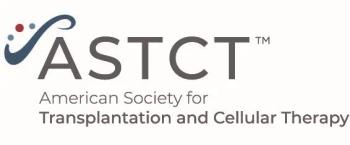
Pembrolizumab Combo Active in Relapsed/Refractory Myeloma
Combination treatment with pembrolizumab, pomalidomide, and low-dose dexamethasone resulted in durable responses in patients with relapsed or refractory multiple myeloma.
Combination treatment with pembrolizumab, pomalidomide, and low-dose dexamethasone resulted in durable responses in patients with relapsed or refractory multiple myeloma, according to results of a phase II study
“Combination immunotherapy with antibodies targeting the PD-1/PD-L1 pathway and immune modulatory drugs provides a novel therapeutic approach for patients with multiple myeloma refractory to current available therapies,” wrote Ashraf Badros, MD, of the University of Maryland Greenebaum Comprehensive Cancer Center, and colleagues. “The combination of pembrolizumab, pomalidomide, and low-dose dexamethasone shows promising durable clinical anti-myeloma activity.”
The study included 48 patients with relapsed/refractory disease. The median number of prior lines of therapy was three and patients had received both immunomodulatory agents and proteasome inhibitors. Patients received 200-mg pembrolizumab every 2 weeks, 4-mg pomalidomide daily for 21 days, and 40-mg dexamethasone weekly in 28-day cycles.
Almost two-thirds (60%) of patients experienced an objective response to treatment. Four patients (8%) had a stringent complete response or complete response, nine patients (19%) had a very good partial response, and 16 patients (33%) had a partial response. The median duration of response was 14.7 months. An additional three patients had a minimal response and 11 had stable disease.
Patients with double-refractory disease had an overall response rate of 68% and patients with high-risk disease had a response rate of 56%.
With a median follow-up of 15.6 months, the progression-free survival was 17.4 months (95% CI, 11.7–18.8) and the overall survival was not yet reached. Among patients with high-risk disease the median progression-free survival was 15.1 months.
According to the researchers, there was a trend for increased expression of PD-L1 among responding patients, and a longer progression-free survival with increased T-lymphocyte infiltrates, regardless of PD-1 expression.
“Understanding the limitation of comparing different studies, the clinical data from the current study support a synergistic activity between pomalidomide and pembrolizumab that led to high overall response rate (60%) that were remarkably durable,” the researchers wrote. “The lack of single-agent activity for the PD-1 inhibitor nivolumab in multiple myeloma patients suggests that myeloma is refractory to anti–PD-1 therapy.”
Forty-two percent of patients experienced a grade 3/4 adverse event including hematologic toxicities (40%), hyperglycemia (25%), and pneumonia (15%). Immune-related events included pneumonitis (13%) and hypothyroidism (10%). Most immune-related events were grade 1/2 and resolved with interruption of therapy.
Newsletter
Stay up to date on recent advances in the multidisciplinary approach to cancer.


















































































